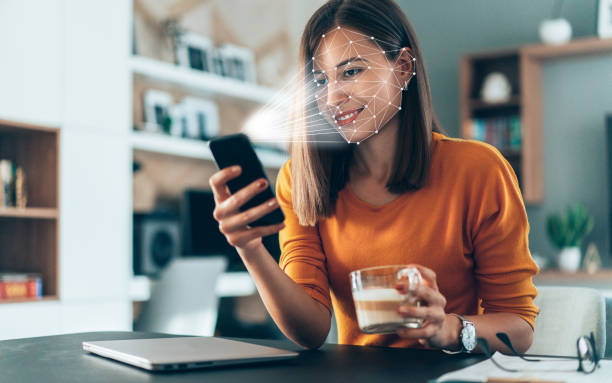Face identification technology is used to recognize and identify individuals. Companies may use this technology to instantly recognize individuals in a picture or video. Moreover, this system acts as a subset when it comes to biometric protection.
Advanced technologies, including Artificial Intelligence (AI) and Machine Learning (ML), have further enhanced the security systems to prevent deepfakes. In this article, we will dive deep to discover the role of face identification online in transforming today’s world.
Face Identification: Mechanism of Working
A facial identification system often doesn’t require a vast picture database to confirm an individual’s identity. In fact, it merely recognizes and identifies one individual as an owner of the device, preventing unauthorized access to other individuals.
Furthermore, facial recognition is not merely used to unlock a user’s phone. It is also employed to check suspicious individuals by comparing their similarity to photos kept in a database. All sorts of photographs, including those from their social media accounts, might end up on the watch lists, and they don’t even have to be of individuals suspected of crime. While there is some variation in how facial identifiers function, this is their general mechanism of action:
Early Facial Detection
In the first step of face identification, the camera identifies a specific face in either a single or group shot. Photographs of people may be taken with either a frontal or side view.
Face Evaluation
Following this, a facial picture is taken for further analysis. The program reads the user’s face’s geometry. The goal is to locate the crucial features of the user’s face that allow others to recognize a user.
Conversion of Image into Data
Face identifier converts the analog information (a face) into a digital data set using the person’s facial characteristics during the face capture procedure. Basically, a formula is developed based on examining the user’s face. Individuals have a unique faceprint (numerical code) analogous to their facial features.
Finding A Compatible Match
A database of known faces is then matched to the user’s faceprint. A facial recognition database must compare faceprints to stored images to decide the authenticity of the user.
Facial identification systems are often regarded as the most secure and convenient biometric system available today. This makes intuitive sense since facial recognition is much more common than thumbprints and iris scans. An estimated 50% or more of the global population frequently interacts with face recognition systems.
Real-World Benefits and Uses for Facial Identification
Some primary benefits and applications of face identification systems are as follows:
Law and Order
Investigation agencies are employing facial identification technology worldwide. Those who are arrested have their headshots taken and checked against a database of known criminals at the municipal, state, and federal levels. After an arrestee’s photograph is taken, it is kept in databases and checked during further criminal record inspections.
Moreover, with the help of mobile facial recognition, law enforcement officials may utilize smartphones, tablets, or other portable devices to snap a suspect’s picture and instantly run it through a database of known faces to see whether they match.
Smartphone Unlocking
Face identification is used as a means of unlocking a variety of smartphones. With this technology, a user’s private information remains safe even if their phone is lost or stolen.
Locating Lost Individuals
Finding missing people and victims of human trafficking using face identification online is possible. After filling up a database with some missing people, face recognition technology can then immediately notify the authorities if a wanted person is identified in a public place like an airport, a shop, or a restaurant.
Safety at Airports and the Border
Face scanners are now standard at airports all over the globe. An ever-growing fraction of passengers now possess biometric passports, allowing them to forego the usual lengthy lineups in favor of a swiffer passage through an automated ePassport check on their way to the gate. Hence, reduced wait times and increased airport safety are two of the many benefits of facial recognition technology.
Minimizing Crime in the Retail Sector
Shoplifters, members of retail crime syndicates, and persons with a history of fraud may all be easily identified using face identification technology. It further helps loss prevention and retail security personnel remain alerted upon customers arriving whose photos match those in vast databases of known offenders.
Banking Sector
Face identification system has several uses, including in biometric internet banking. As an alternative to utilizing one-time passwords, users now approve purchases simply by presenting their smartphone or computer screen. Moreover, face recognition makes cybersecurity far more secure without the need for passwords. Liveness detection is a method for determining whether a biometric sample was taken from a natural person or a simulation to prevent impersonation if hackers access your picture database.
Final Words
It’s true that biometric information is among the safest ways to verify a person’s identity, but that doesn’t mean it’s risk-free. In fact, if a person’s credit card information is stolen, they must immediately take measures to secure their credit and update their compromised personal data. Face identification technology, however, transforms digital security worldwide, making every sector more secure than ever and minimizing the threats of deepfakes, spoofing attacks, and identity theft.


